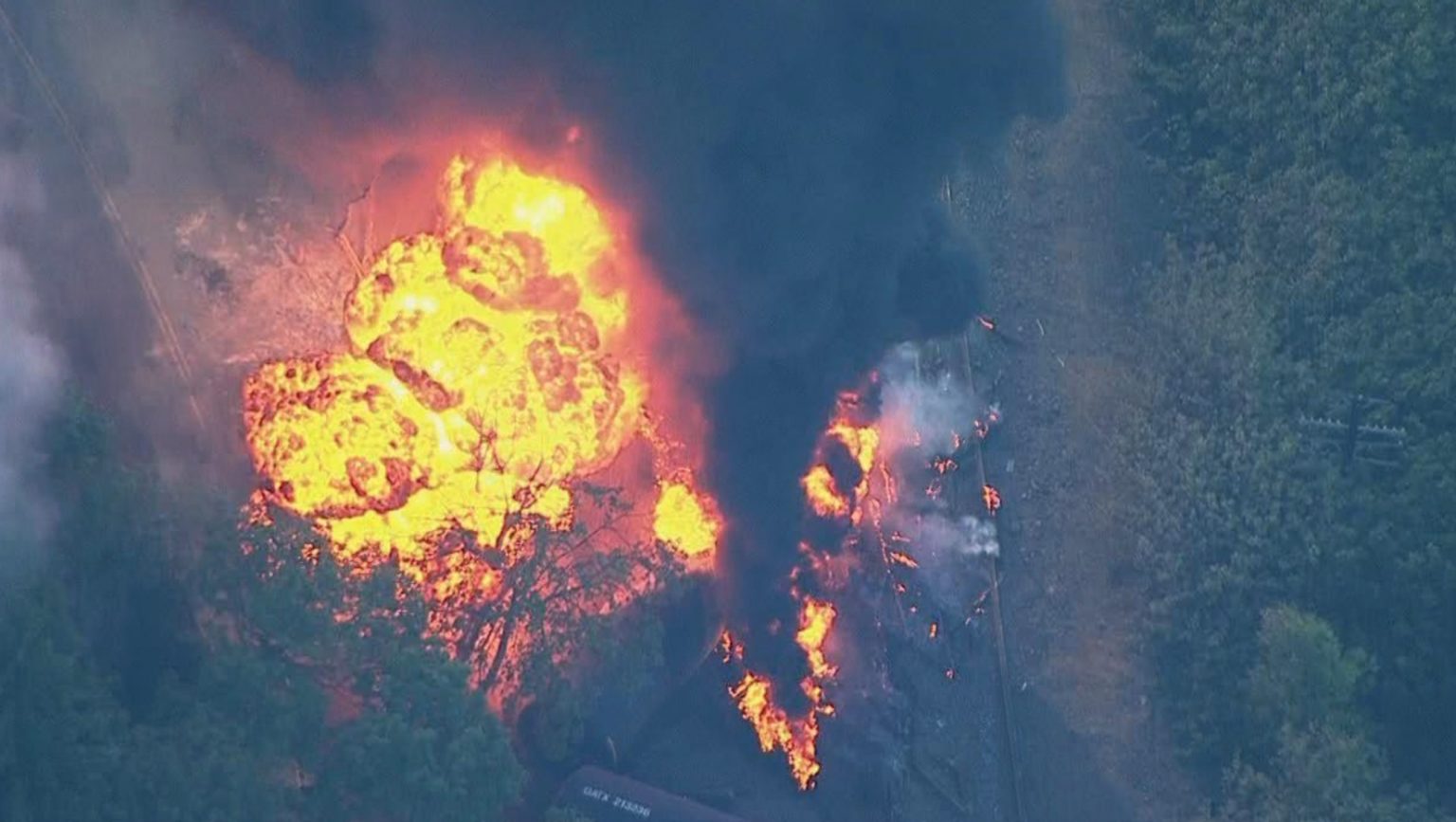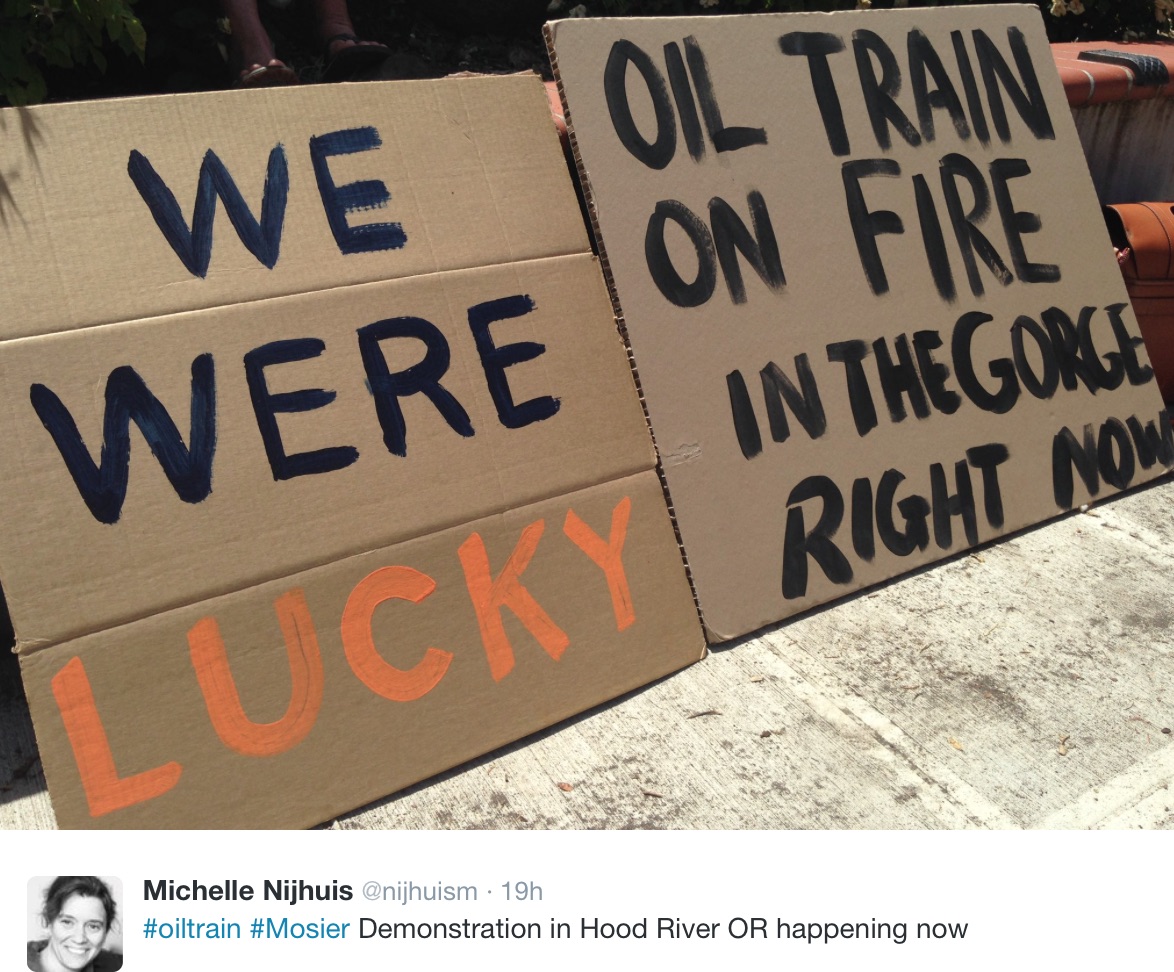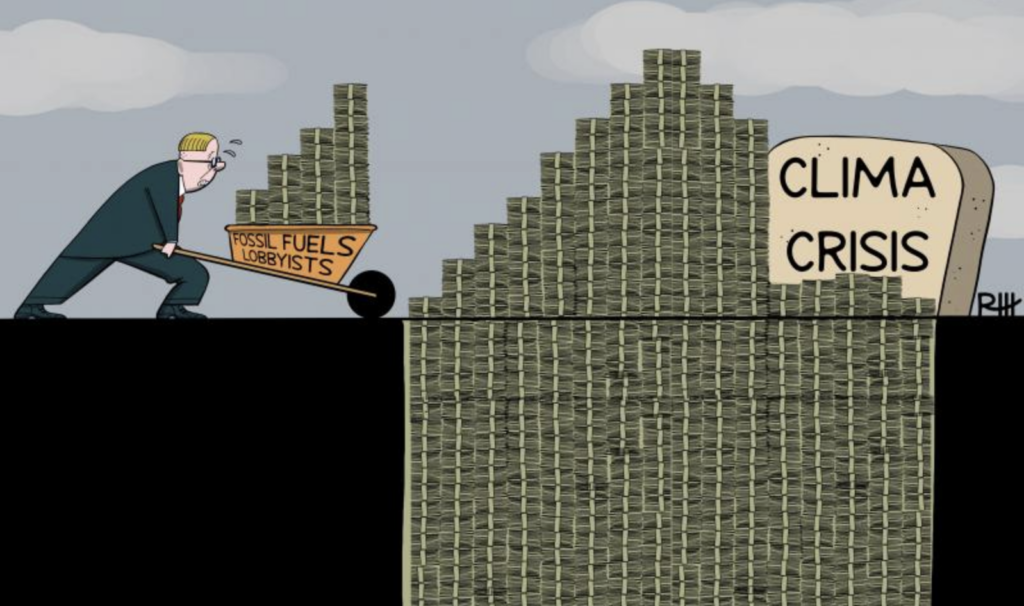Luck was in abundance on Friday in Mosier, Oregon where the latest Bakken oil train derailed and erupted into flames near a 50-home residential area and a school.
As Mosier Fire Chief Jim Appleton said, “Mosier really dodged a bullet in the last 24 hours.”
“I hope that this becomes death knell for this mode of shipping this cargo. I think it’s insane,” Appleton said. “I’ve been very hesitant to take a side up to now, but with this incident, and with all due respect to the wonderful people that I’ve met at Union Pacific, shareholder value doesn’t outweigh the lives and happiness of our community.”
It’s a familiar story to those following the Bakken oil “bomb train” saga — luck.
“If I had been there another second, it’d probably have killed me,” Bounds said. “Glass was flying everywhere behind me. The walls were caving in. I hadn’t run like that in years.”
That was Morris Bounds describing to The Spokesman Review how he barely escaped the derailing Bakken oil train that destroyed his home in Mount Carbon, West Virginia in February 2015. He literally saw the train derailing and ran out his front door as the train wiped out his house behind him.
You don’t get much luckier than Morris Bounds. Or his wife, who happened to be in the hospital that day instead of at home.
Later that year when another Bakken oil train derailed in a residential neighborhood in Watertown, Wisconsin but did not ignite, Sarah Feinberg, the head of the Federal Railroad Administration, declared, “We feel we got really lucky.”
In an article out earlier this year providing the details of the Wisconsin accident — titled “Derailment could have been worse” — we learned just how lucky they were in Watertown from a local fire official: “What I saw was the main car that was leaking, jumped the tracks, landed into the back of that building, hit an electrical transformer box and also had the natural gas leaking to it.”
It has been quite a run of luck for the oil and rail industries that no one has died in these accidents since the 47 people who perished in Lac-Megantic in July 2013. However, because very little has been done to regulate the oil-by-rail industry since Lac-Megantic, at some point we will see the luck run out.
Image Credit: Chopper 2/KATU
Mosier Was Best Case Scenario, And Disaster Still Struck
The troubling aspect of the Mosier accident is that it was pretty much the best case scenario for oil train safety we can expect for the next 5-10 years.
The train “wasn’t going too fast”, the tank cars were the “best” of the group of existing cars that are scheduled for retrofits to improve safety, the oil had been “conditioned” as per North Dakota regulations to supposedly make it less dangerous before it was put in the tank cars, the tracks had recently been inspected and defects had been fixed and — according to a BNSF spokesman — about a month ago, there had been an oil train safety training exercise involving two railroads and local first responders at this very location in Mosier.
And yet, with everything possible going right in Mosier, a train derailed and the Bakken oil provided its signature explosions and fires. And once again, there is Bakken crude oil polluting a river. The Columbia River is a key source of irrigation water to thousands of farms, as well as a drinking water source for riverside communities. It now sports an oil sheen of Bakken oil.
Which all illustrates the complete inadequacy of the current regulations to keep the 25 million people who live within the bomb train blast zones of a potential oil train derailment safe from this danger.
Mosier “Best Case Scenario” Will Be Status Quo for Next Nine Years
As has been documented on DeSmog, the biggest risk to the communities along the rails is the volatile Bakken oil itself. However, the oil could be made less volatile by a process known as stabilization that removes the flammable gases in the crude oil mixture.
But stabilization costs the oil companies money, so it isn’t done. And when the new federal regulations were being finalized, the directive to make sure that stabilization wasn’t included came from the White House, as reported by Reuters.
And then, as DeSmog reported, the White House got involved in the regulations in North Dakota where stabilization was also taken off the table.
Four Bakken oil trains have crashed since the new North Dakota regulations designed to “condition” the oil to make it safer were put in place. Two of the four have resulted in fires and explosions. If you live within a blast zone, you probably don’t like those odds.
Of course, since the North Dakota conditioning regulations allow oil that is significantly more volatile than the oil involved in Lac-Megantic, the fact that the trains are still exploding shouldn’t surprise anyone.
And that volatile oil is being put into tank cars that rupture even at slow speeds. And thanks to lobbying efforts by the oil industry, the CPC-1232 tank cars — the type involved in Mosier — will be allowed to move unstabilized Bakken oil until May of 2025.
So, only nine more years to rely on luck as the best safety strategy.
And as far as the recent inspection of the tracks, that clearly isn’t enough. In the Bakken oil train disaster in Mount Carbon, West Virginia, it was revealed that that section of tracks had recently been inspected twice. And the Bakken oil train that exploded with cars ending up in the James River — inspections had shown flaws in the tracks — but the trains kept running.
The Bakken train that derailed and exploded in Galena, Illinois was the result of a defective wheel on the rail car. The defect had been detected a month before that accident and again on that very trip. But regulations don’t require railroads to fix these wheel defects when they are found.
Just as there are no regulations for track wear because, as the Associated Press reported last year, the industry fought against them. The AP article ran with the title, “Railroads quashed new rules on worn rails after 2012 derailments.”
But the reality is that running these long and heavy oil unit trains with high frequency on any tracks is a recipe for disaster.
As the Safety Transportation Board of Canada noted in an investigation of oil train accidents:
“Petroleum crude oil unit trains transporting heavily loaded tank cars will tend to impart higher than usual forces to the track infrastructure during their operation. These higher forces expose any weaknesses that may be present in the track structure, making the track more susceptible to failure.”
Doug Finnson, president of the Teamsters Rail Conference of Canada, explained this same concept to CBC News after an oil train derailment in Canada last year saying, “These trains are likely too long, too heavy and going too fast for the track conditions in place.”
So what do the regulations say about how long a fully loaded oil train can be? There are none.
From a safety and regulatory standpoint, everything was optimal in Mosier. And still an oil train derailed and exploded near homes and schools, and is leaking into the Columbia River.
Public Relations to Protect Profits
While the oil and rail industries have worked hard to avoid new safety regulations, the industries have also been active in public relations efforts to assure the public that first responders are prepared to deal with a Bakken oil derailment and fire.
But the fact is, the recommended protocol is to evacuate the area and let the fires burn themselves out.
Just recently we’ve seen assurances to the people in Wisconsin from the American Association of Railroads about the safety of rail transport. In May, the US Senate passed a bill for more funding for firefighter training for oil disaster response.
New York just received a grant for more foam equipment and training resulting in a sound bite from Governor Andrew Cuomo: “This funding will provide our firefighters with the highest level of training and ensure they have the tools they need to tackle these very dangerous emergency situations.”
But as we have repeatedly noted on DeSmog, there is no training nor any tools that firefighters can acquire to deal with these fires. As rail safety expert Fred Millar explained at the Oil Train Response 2015 conference, “Emergency response is a distraction from what we have to do,” Millar said. “We need not be polite to the rail roads… and the state and local officials who keep pretending that they can be prepared.”
In Mosier we once again learn that talking about emergency response as a valid solution to oil train disasters is indeed a distraction.
As in every previous instance, the local emergency responders could not handle the situation. The department didn’t have any of the fire suppression foam and had to wait for that to arrive.
But we also learned from Chief Appleton another reason why the recommended approach is to evacuate and let the tanks just burn out. The foam doesn’t work on burning Bakken oil tanks.
“The rationale that was explained to me by the Union Pacific fire personnel is that the metal is too hot, and the foam will land on the white-hot metal and evaporate without any suppression effect,” Appleton said. “That was kind of an eye-opener for me.”
Is there any question left why luck is all we have to rely on as protection from Bakken oil trains?
American Lac-Megantic Could Happen At Any Time
We know the Bakken oil is dangerous and the oil tank cars are unsafe even at slow speeds — and that isn’t due to change for years. And while there is movement on potential rail wear regulations, that also is years away in a best case scenario. And history shows that even when flaws are detected, the bomb trains keep rolling anyway.
In early 2016, the head of the National Transportation Safety Board commented on the reality of the volatile oil-by-rail situation.
“We have been lucky thus far that derailments involving flammable liquids in America have not yet occurred in a populated area, but an American version of Lac Megantic could happen at any time.”
The 25 million people living in the oil train blast zones shouldn’t have to rely on luck to stay safe, but clearly that remains their only option.
Blog Image Credit: KATU
Subscribe to our newsletter
Stay up to date with DeSmog news and alerts









